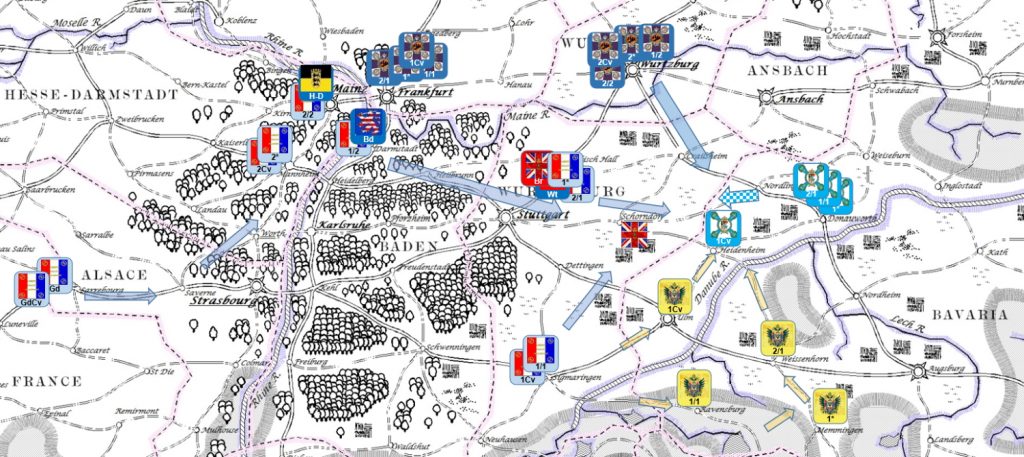With the Austrians becoming the latest member of the German Confederation to be bundled back across the border (the Wurttemberg border, defended by the French), the Confederation found itself frustrated on all fronts. While their troops recovered and took in fresh supplies and recruits, they held a conference on 10th July at Ansbach to agree how to re-invigorate the campaign.
Once the arguments about uncoordinated attacks and accusations of slow mobilisation (everyone looked at the Austrian representatives) had run their course, they got down to business. With the schnapps poured, the generals and their political masters hammered out a plan intended to deal a fatal blow to the the rebel states and their meddling allies.
This time there would be no disjointed attacks by separate forces. Instead there would be a great concentration within eastern Wurttemberg, set to strike towards the heart of the enemy at their capital, Stuttgart.

The Prussian II Korps, recovering from their rough handling at Auenwald by the French, would march south east to Crailsheim. The Bavarians would again cross the border on the road to Schorndorf, while the fresh 2nd Division of the Austrian I Korps would come up from the south, crossing the Danube at Heidenheim. These coordinated movements would begin on 17th July, with assembly at Huttlingen to be completed by the 19th.
Together, they would muster an army of over 60,000 men – surely enough to brush aside the tired French, British and Wurttembergers.
Meanwhile, the allies were confused by reports from the front lines. In the north and south, there were no signs of second thrusts from the Prussians and Austrians respectively. In fact things had gone very quiet, as indeed they had in the east where the Bavarians seemed subdued after their defeat at Schorndorf. Though glad of the time to rest and regroup, they were suspicious that something was brewing. Scouts, agents and diplomats kept every ear and eye open, and finally on 16th Marshal Pelissier of French 1st Corps received intelligence that the Confederation were about to make their move in the east.
With great haste, an urgent defensive plan was hatched. The newly (finally) assembled Imperial Guard would march to Mainz via Mannheim, to relieve Canrobert’s 1st Corps who would hasten east to support Pelissier for a decisive confrontation. As a result of the Confederation’s somewhat ponderous implementation of their plan, the Allies were actually able to begin their response a full 24 hours ahead of them. It would be a race to see who could get into position first for the great clash to follow.

Excellent! Look forward to the Battle report.
Also looking forward to the report.